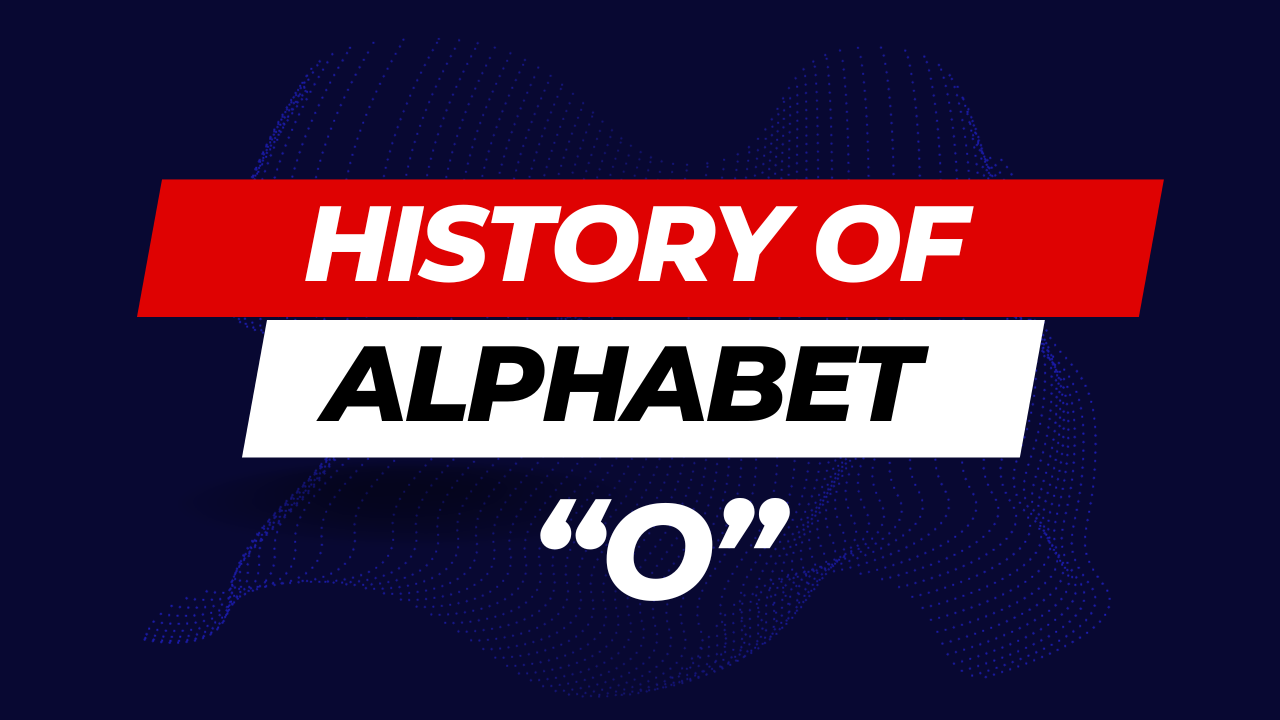The History of Alphabet "O" is a riveting journey through time, tracing the evolution of this seemingly simple yet profoundly influential letter. From ancient scripts to modern languages, the letter "O" has left its indelible mark on human communication. In this article, we embark on an exploration that delves deep into the origins, transformations, and cultural significance of this enigmatic symbol.
History of Alphabet "O": A Pictorial Journey
The History of Alphabet "O" begins in ancient civilizations where symbols were more than just letters—they were pictographs, telling stories through images. In early Proto-Sinaitic scripts, the "O" shape resembled an eye, signifying vision and perception. As writing systems evolved, the "O" underwent numerous artistic variations, reflecting the diverse cultures and languages it became a part of.
The Birth of "O": Ancient Origins:
In ancient Phoenicia, the "O" emerged as a circular symbol representing wholeness and unity. It found its way into Greek and Latin alphabets, where it retained its circular form, symbolizing cycles, eternity, and cosmic harmony.
"O" in Eastern Alphabets: A Cultural Odyssey:
Eastern scripts such as Devanagari and Arabic calligraphy embraced the circular elegance of "O." In Sanskrit, "O" became a sacred sound, representing spiritual awakening and enlightenment. Arabic scripts utilized the letter to denote sounds that didn't exist in other languages, emphasizing its unique phonetic significance.
Renaissance and Typography: The "O" Reimagined:
During the Renaissance, the art of typography allowed for creative reinterpretations of letters. Ornate, decorative "O"s adorned manuscripts, becoming symbols of artistic expression and sophistication. The letter found its way into ornamental designs, showcasing the aesthetic appeal of its shape.
FAQs About the History of Alphabet "O":
What is the significance of the circular shape of "O"?
The circular shape of "O" has symbolized unity, eternity, and cosmic harmony in various cultures. Its form reflects cycles, representing the cyclical nature of life and the universe.
How did "O" evolve in different languages?
"O" evolved differently in various languages, adapting to distinct phonetic sounds and script styles. In some languages, it retained its circular shape, while in others, it underwent unique transformations, highlighting the linguistic diversity of human communication.
Is there a connection between "O" and spirituality?
Yes, in several ancient languages, including Sanskrit, "O" represents a sacred sound associated with spiritual awakening and enlightenment. Its pronunciation is considered powerful and transformative in spiritual practices.
Why is the letter "O" often used in ornamental designs?
The circular and aesthetically pleasing shape of "O" makes it a popular choice in ornamental designs. Its symmetry and elegance enhance visual compositions, adding a touch of sophistication to various artistic creations.
Are there cultures where "O" holds specific cultural or religious significance?
Yes, in some cultures, the letter "O" holds specific cultural or religious meanings. For example, in certain African traditions, circular symbols resembling "O" are associated with tribal rituals and ancestral worship, signifying the cyclical nature of life and generations.
How has digital typography influenced the appearance of "O"?
Digital typography has allowed for innovative interpretations of "O." Designers can experiment with fonts, styles, and sizes, leading to diverse representations of the letter in digital media. This flexibility has expanded the creative possibilities of incorporating "O" into various designs.
Conclusion:
The History of Alphabet "O" is a tale of timeless elegance and cultural diversity. From its humble beginnings as a pictorial symbol to its current role as a fundamental letter in alphabets worldwide, "O" has transcended linguistic barriers, embodying the essence of human expression. As we explore the fascinating journey of this letter, we gain a deeper appreciation for the intricacies of language and the symbols that shape our understanding of the world.



.png)
.png)
0 Comments